What if… the MCC compact is not endorsed?
How will the US-Nepal relations be affected if Nepal rejects the MCC compact? This query was put to Fatema Z Sumar, vice-president of the Department of (MCC) Compact Operation, who visited Nepal in September this year to press Nepali leaders for the compact’s early parliamentary ratification.
At the press meet, she sounded confident that bilateral relations would remain cordial with or without the MCC but said she was still optimistic about early ratification. Highlighting the age-old bilateral relations, she said: “The two countries have shared a special bond for more than 70 years. This partnership will endure long before and after the MCC… The MCC is one offer from the American people to grow the economy here.”
It has been over four years since the MCC compact was signed between the two countries but parliamentary ratification, a prerequisite for its implementation, is still in limbo. Though she did not set a deadline, she said, “It’s high time Nepal ratified the compact,” adding, “How long can we afford to wait [for it] to be endorsed?” As per the agreement, the compact should have come into force in 2019.
According to experts and people familiar with the MCC, even though bilateral relations may not suffer drastically over the compact’s failure, such an outcome will have consequences. As Sumer suggested, there is growing impatience on the American side over the delay. Issuing a press statement on October 29, the MCC headquarters again reiterated: “The delays to ratification jeopardize the critical and timely support this $500 million grant would provide to help more than 23 million Nepalis access reliable energy and safer roads. The decision whether to move forward with the compact now rests with Nepal.”

Similarly, Deputy CEO of MCC Alexia Latortue met PM Deuba on the sidelines of the C0P26 summit. Deuba asked Alexia to wait for some time for the MCC endorsement. On his return to Kathmandu, Deuba for the first time disclosed that he and Pushpa Kamal Dahal had both committed to the compact's endorsement. Dahal accepted sending a letter to the US to that effect but then added that he would still like to see the compact’s amendment before its parliamentary endorsement.
Mrigendra Bahadur Karki, Executive Director at the Center for Nepal and Asian Studies (CNAS), points out possible implications of the grant’s rejection. Karki says it will mark a great setback to the old bilateral partnership. If the MCC is snubbed, Nepal’s larger policy of diversifying its trade and economy beyond two neighbors will be as well. “Such a strategic failure will certainly have consequences,” he cautions.
Some economists also fear a spoiling of the environment for foreign investment, as investors think twice before coming to a country where development projects are excessively politicized.
Uma Shankar Prasad, an Associate Professor at the Central Department of Economics, TU, who is also a member of the National Planning Commission, however, does not subscribe to such views. “There has been an exaggerated debate in Nepal over the MCC,” he says. “I don’t think withdrawal of the MCC’s support, which is not a big amount, will have much of an impact on our overall investment climate.”
The MCC’s withdrawal may also have spillover effects on Nepal’s equation with China’s Belt and Road Initiative (BRI). Since signing a framework agreement in 2017, there has been a one-sided debate—that Nepal should unconditionally select projects under the no-strings-attached BRI. Karki says if the compact is canceled due to growing political polarization, it will trigger a debate on why the country should accept BRI and not the MCC. “In that case, it could be difficult to move ahead with the BRI as well, which is not good for Nepal,” he says.
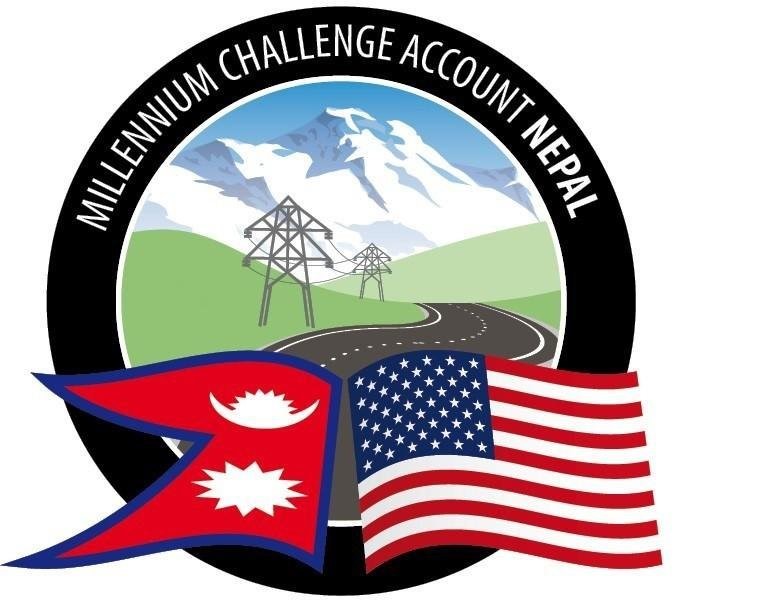
China has not objected to the MCC projects in Nepal but reports from Chinese official media and think-thanks do suggest that the northern neighbor would like Nepal to maintain a distance from the MCC, which it sees as a part of the Indo-Pacific Strategy aimed at containing China. Now, there is little progress on both the MCC compact and as well as the BRI projects. Says Former Nepali Ambassador to the UK and US Suresh Chalise, the MCC and the BRI are inter-related and if one moves ahead the other one will as well.
But the chances of the compact’s ratification before the elections are slim as there are divergent views even inside the ruling coalition. Though Prime Minister Sher Bahadur Deuba wants the parliament to endorse the compact, two other senior leaders in the coalition, Pushpa Kamal Dahal and Madhav Kumar Nepal, are in favor of its endorsement only after requisite amendments.
Chalise says the compact’s implementation could pave the way for trilateral cooperation among Nepal, India, and Bangladesh on hydropower. His understanding is that India, which prefers bilateral cooperation with its neighbors, has agreed to trilateral cooperation only because the US is the third party. “We are ramping up electricity production and we need good transmission lines to sell electricity in the Indian and Bangladeshi markets. If the transmission line under the MCC is not built, we will suffer because there is a huge investment in the hydropower sector,” he says.
Indeed, a senior bureaucrat requesting anonymity says initially India was not in favor of building the Butwal-Gorkhapur transmission line and agreed to it only after the Americans entered the picture.
Also read: What if… the 2015 constitution had been delayed?
Some experts are of the view that as America has huge influence in multinational financial institutions, there could be some implications for Nepal there as well. The US won’t go to the extent of punishing Nepal even if it rejects the compact, says Chaise. “But America is a superpower. If it remains indifferent or silent on Nepal’s agenda in the international forum—that will most certainly affect us. On the other hand, if we gain its trust, it could speak in our favor.”
According to him, the US-Nepal bilateral relationship is far more important than the MCC compact or any other project.
Domestically, if the compact is rejected, the CPN (Maoist) and other fringe communist parties that are continuously opposing it are likely to gain from it electorally. The compact’s rejection would also signal the prevailing of communist narrative on Nepal’s foreign policy.
Expert opinion
What if MCC is not approved?
Chandra Dev Bhatt
In the past three-plus decades, interaction between Nepal and the US has increased to the extent that it has trickled down seamlessly to people-to-people level. Today many of our youths interact more with the US than the Nepali state itself, for multiple reasons. The most important is the failure to create opportunities for the educated youths and others within the country and in the neighborhood. Both ‘pull’ and ‘push’ factors have forced people to go outside and the US has become their number one destination.
The pull and push factors have created confusion as to how the state should craft its foreign policy. Whether it should follow societal needs or retain its traditional approach. The situation has become complicated with the MCC row. There are those who are in its favor. Others strongly oppose it yet would still like to benefit from other opportunities that America offers.
For many Nepalis, the US is increasingly becoming a second home. If the MCC Compact does not make it through, this definitely will have consequences even at the people-to-people level.
America, over time, has become an indispensable neighbor, albeit one with which we do not share our borders. If the Chinese and Indians are interacting with the US on multiple levels, why should not Nepal?
What if… sanitary pads were made free?
Nepali women pay 13 percent value-added tax (VAT) on menstrual hygiene products such as sanitary pads. This is one reason the prices of menstrual products are markedly high, especially in rural municipalities and villages, making it difficult for women of low-income groups to procure them every month.
A 2016 report on menstrual health and hygiene management found that, only 15 percent Nepali women used sanitary pads while 83 percent still used cotton cloths. Similarly, a survey conducted by Pad2Go Nepal, a for-profit social enterprise that is campaigning to remove taxation of menstrual products, has calculated that an average Nepali woman uses about 7,296 pads in her lifetime.
The government grants VAT exemption on ‘essential’ items such as medical products, medicines, and contraceptives, but menstrual hygiene products are still treated as ‘luxury’ items that don’t qualify for the exemption.
But what if menstrual products were made free? Would more women use them? Or are there other factors that come between accessibility and use?
Also read: What if… the 2015 constitution had been delayed?
Youth Congress Nepal, in collaboration with Pad2Go Nepal, had organized a symbolic protest on September 23 at Maitighar, Kathmandu, demanding the cancellation of taxes on menstrual hygiene products. Protest participants were of the view that while withdrawing taxes or making such products free is of utmost importance in the short run, making them easily available to everyone and busting period-related myths through education are as important in the long run.
“A large segment of the population isn’t even aware of menstrual hygiene products and is still obliged to use unhygienic cotton cloths,” says Asmita Shah, central committee member of Youth Congress. She says such products should not only be tax-free but completely free for all menstruating women from rural areas.
Expensive in Humla
Twenty-year-old Kritagya Kriti, a volunteer at Himalayan Education and Development (HEAD Nepal), a non-profit that works for persons with disabilities in Simikot, Humla, was shocked to find that the menstrual pads there were over twice as expensive as they would be, say, in Kathmandu. “The price of a regular pad there is Rs 150 even as the MRP is Rs 60,” Kriti shares. “How can we expect menstruating women to maintain menstrual hygiene if doing so burns a hole in their pocket every month?”
In areas like Simikot, due to long distance, menstrual products are sold at a retail price multiple times the original price. In Upper Dolpa, these products are not even available due to lack of proper transport facilities.
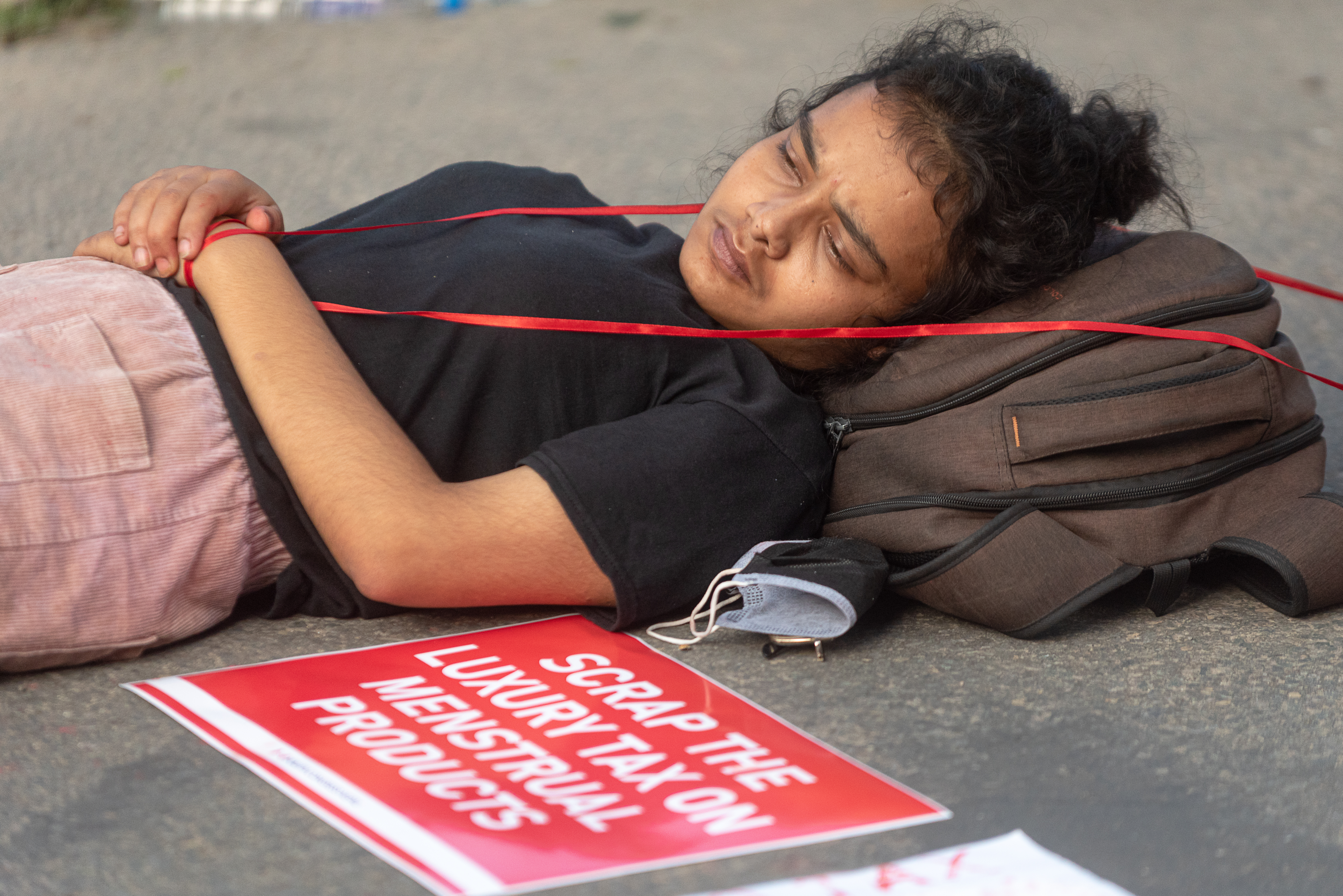
“People don’t have periods by choice,” says Dr Garima Shrestha, women’s health advocate and founder of She Nepal, a voluntary organization for women’s health and empowerment. “Every one of menstruating women deserves proper and affordable facilities to ensure their health and hygiene.”
Shrestha, too, believes that making menstrual products tax-free is not the panacea. They should rather be made completely free for menstruating women from low-income groups. She Nepal has distributed around 20,000 reusable sanitary products in 23 districts for free, among which 10,000 were distributed during the Covid-19 lockdown.
Pooja Bista, co-founder of Untold Period Stories, a digital movement that promotes the normalization of periods through storytelling, says menstrual products, a basic need, should be made tax-free, but she wonders if making pads completely free is the answer to what is a multi-pronged problem.
“We talk about making these products free, but we aren’t mindful of what will happen after that,” she says. Bista fears making sanitary pads free may affect their quality and their supply chain. Especially in a country like Nepal where there is little effective monitoring, there is always the risk of corruption from among suppliers, sellers, and retailers.
Dr Shrestha concurs: “We have no way of monitoring the whole manufacture and distribution process”.
That said, with alarming levels of period poverty in many villages and rural areas, free pads would cater to the needs of a large population of menstruating women who can’t afford to buy these products. “They will at least have something to cover their periods which is better than having nothing,” Dr Shrestha adds.
Suspicious eyes
There are also other factors holding back Nepali menstruating women from using these products. “It depends on their age, geography, health condition, and if such products are socially and ethically acceptable,” Bista says.
Countless superstitions and myths still surround menstruation. When distributing reusable menstrual products, there were times when people looked at Dr Shretha’s team suspiciously as they were promoting something that many considered a taboo. And then there are the myths.
Untold Period Stories is now collaborating with Be Artsy Nepal, another digital platform, to share period stories of women of Achham district in far-western Nepal under #mytakeonmyperiods. Shares Thambara BK, 28, a tailor: “The villagers say menstrual blood is impure. My menstrual blood is rather black or brownish, whereas the blood that comes out of our wounds and noses is crimson red. So how could I disagree?” Like many other women of the district, BK has unquestioningly accepted common societal myths over period taboos.
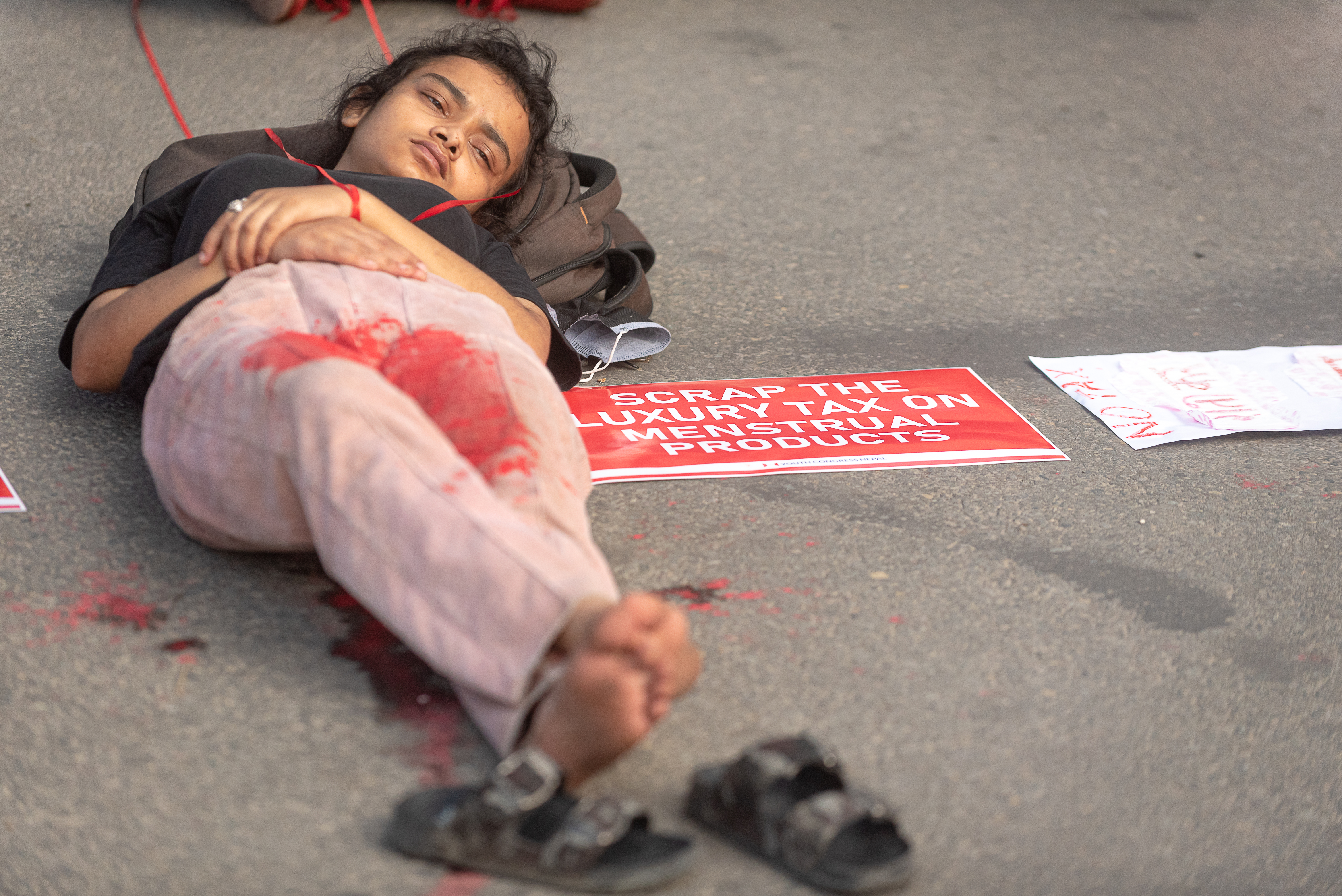
The state has been providing free pads to menstruating students of government schools to help reduce the number of absentees. But there is no clear data that high price is the only reason holding many girl students from using sanitary pads.
“While it is good that we are working to make menstrual products more accessible, we still lack awareness,” Dr Shrestha says. “When I visited a government school in Kakani, a student told me that her health education was being hampered as her male teacher feels uncomfortable talking about the female body.”
Then there are more common cases of lack of awareness. In yet another #mytakeonperiod story, Bhagwati Bista, 35, shares, “I don’t have heavy bleeding, so I use one cotton cloth that lasts a day. But I wasn’t aware that we had to change it frequently even if it’s a light flow”.
The missing focus
It is also necessary to acknowledge the sustainable aspect of sanitary pads. In many places of Nepal, people still aren’t aware of how to properly dispose of them. Often, there isn’t enough water to maintain proper sanitation when using reusable menstrual products.
There is much to do, activists say. Shah believes that if we are to reduce the price of menstrual pads by scrapping the luxury tax, more people can afford them and they can be accessible in more places—and that would be a good start.
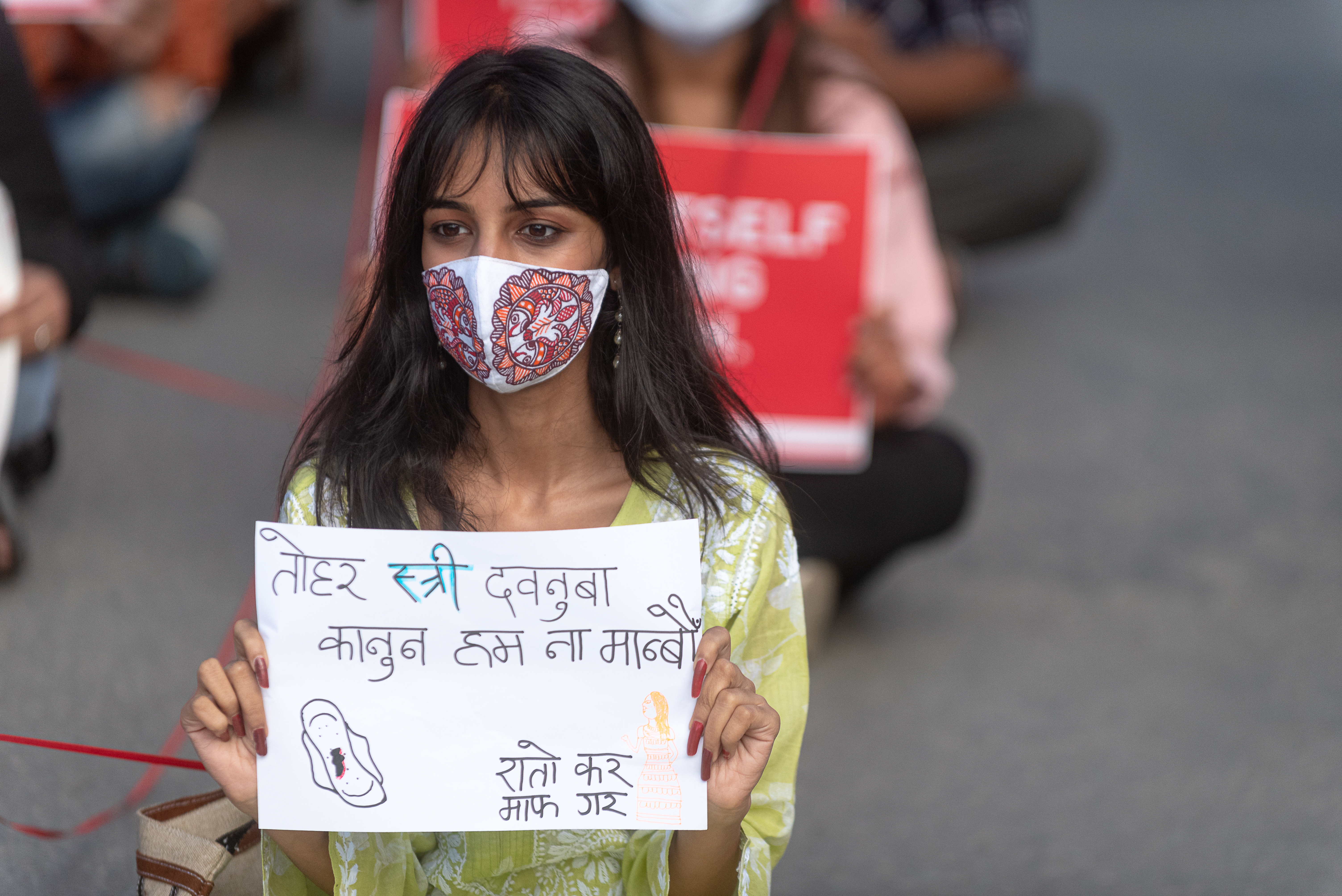
“If zero tax is not possible right now, alternatives should be thought about,” says Krisha Niroula, research associate at Untold Period Stories. “These may involve building local sustainable [cloth] menstrual products-making plants and levying bare minimum taxes on them or subsidizing period products for the underprivileged.”
In the course of doing this article, one thing became pretty evident: we need more research on this issue. To promote accessible and hygienic menstrual health for all, the focus should be not only on removing taxes on sanitary pads or distributing them for free, but also on menstrual education, awareness, infrastructure, and removal of taboos.
What if… the 2015 constitution had been delayed?
September 19 marks the sixth anniversary of the promulgation of the Constitution of Nepal 2015. While a sizable population celebrates the day with fanfare, many in Tarai-Madhes observe Constitution Day as a Black Day, a big setback in their fight for representation and justice.
The constitution, drafted following the decade-long Maoist insurgency and two Madhes movements, is yet to fully address the demands of Madhesis. Nonetheless, although disagreements over the constitution have inevitably surfaced, all political parties have decided to resolve them in a democratic way.
But, what if the constitution had not been promulgated on that day? How would the country be faring today?
Radheshyam Adhikari, member of the National Assembly and ex-chairperson of the Regulation Drafting Committee of the Legislature-Parliament, had closely worked with the constitution’s final drafts. “We promulgated this constitution under a specific situation. The political parties might not have arrived at a consensual document had it not been for the earthquake earlier in the year,” he adds. “The sorry plight of millions of fellow Nepalis imbued our politicians with a sense of duty.”
When the first Constituent Assembly failed to deliver, a second CA had to be elected in 2013. Around 80 percent of the newly elected were new to the assembly. The big difference between the first and the second CA was that while the new revolutionary forces like the Maoists and Madhesi parties were dominant in the first assembly, traditional parties like Nepali Congress and CPN-UML had reclaimed their dominant position in the second assembly. This, in the eyes of many, greatly diluted progressive agendas of the post-2008 period.
But Adhikari reckons there wouldn’t have been a third CA had the second one also failed to deliver a constitution. “In such a situation, we would have gotten a constitution, but through some commission and not via people’s representatives,” he says. “Such a national charter would not have reflected people’s aspirations.”
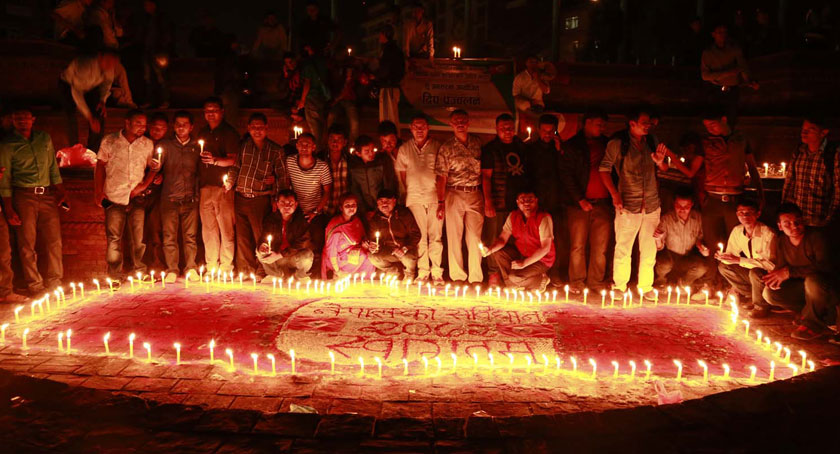 Youths light candles at Maitighar Mandala as the Constituent Assembly endorsed all the articles of draft constitution on 16 September 2015 | Photo: RSS
Youths light candles at Maitighar Mandala as the Constituent Assembly endorsed all the articles of draft constitution on 16 September 2015 | Photo: RSS
Santosh Mehta, spokesperson for the then Rastriya Janta Party Nepal, reminisces the time he felt the CA veered off-course in 2015. “I hadn’t imagined the major parties would ditch the demands of the Madhesis and treat us as if we are not Nepalis,” says Mehta. He says this constitution has divided Nepalis by creating psychological barriers between the country’s major ethnic groups. “Relations between the various ethnic groups would have been stronger and more cordial without this disrespectful constitution,” Mehta adds.
It took almost a decade following the 2007 Madhes movement to promulgate the constitution. Political parties tried to forge consensus in this time, mostly on the contentious issue of the number and nature of federal provinces, but to no avail. In the desperate post-earthquake days, all major parties had to compromise on their agendas to give the country a way out. But they failed to have Madhesi parties on board.
“It was no big deal. Had we not been able to have a constitution in September 2015, we would have had one by early 2016, which would also have helped resolve most contentious arguments,” claims Chandrakishore, a Birgunj-based journalist. He says major parties rushed the process, ignoring the demands of a large portion of the population. “They issued an urgent whip to the CA members without giving enough time to the parties on the street, in what was an intentional provocation,” he adds.
Fed up with the autocratic monarchy, there was a surge of hope among the people when the country became a federal republic in 2008.
“That hope would have died had the second CA also failed to deliver a timely constitution,” says constitutional expert Bipin Adhikari. “No one would then have believed that people’s representatives were capable of steering the country.” Adhikari thinks people would then have started pining for the monarchs again.
As nearly 90 percent of CA members (538 out of 598) voted in the charter’s favor, many politicians continue to consider it among the best constitutions in the world.
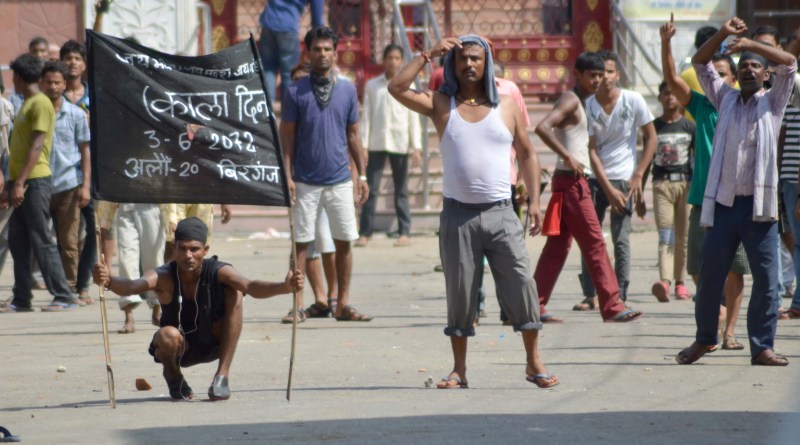 Youths of Birgunj protesting against the promulgation of Constitution of Nepal 2015 | Photo: Madhesi Youth
Youths of Birgunj protesting against the promulgation of Constitution of Nepal 2015 | Photo: Madhesi Youth
Political analyst CK Lal reminds that each of Nepal’s seven constitutions—be it the one in 2015, in 1962 or in 1948—was touted as ‘the best in the world’. “This title has always jinxed us,” he shares. “If the second CA had also failed to deliver, they would most probably have added federalism to the Interim Constitution of Nepal 2007 and made it permanent,” he says. “This would have been better as the 2015 constitution is more regressive than the interim one in terms of the demands of Madhes.”
Hisila Yami, a member of the first Constituent Assembly from UCPN (Maoist), echoes Chandrakishore. “The 2015 constitution would have been more widely hailed and accepted had it been postponed by a few days,” she says. The constitution, in the form it was promulgated, watered down the rights of women, indigenous, and minority populations. Yet, she is happy that the second CA finished off a must-do task.
Sixty people were killed during the months-long protests against the constitution—six of them on the very day of its promulgation. Observers in favor of the parties’ decision to push for the constitution say that this number would have significantly increased had the constitution been put off any longer, while those against say nobody would have had to die in that case.
Most progressive political actors accepted the Constitution of Nepal 2015—even if some did so grudgingly—as it institutionalized federalism and paved the path to socialism.
Madhes-based critics, however, still have problems with citizenship, provincial structure, proportional representation and inclusion-based issues. Lal says major parties’ leaders won’t listen to Madhesi agendas. For him, eventually, there has to be another revolution to right the wrongs.
Yami says there are quite a lot of ways to make the constitution better—it’s just a matter of political commitment. Here too, she thinks Nepal needs a national political consensus. “This constitution is a glass half-full. We have to fill it soon,” she adds.
Constitutionalist Adhikari says any constitution is a work of compromise. “No one gets to fulfil all their demands,” he concludes.
What if… the constitution had been delayed?
The rapid unraveling of the Nepal Communist Party government, with its two-thirds strength in parliament, and the subsequent political instability, have deepened the debate about the desirability of the new constitution, promulgated on 20 September 2015. The constitution was meant to apply salve to a country traumatized by devastating earthquakes earlier that year. The major political actors mended fences to finalize the constitution, in what was an amazing show of unity. Yet the ‘fast-track’ constitution had started facing strong headwinds since the day of its promulgation, which was immediately followed by a six-month-long border blockade.
While Kathmandu and many mountainous communities celebrated the constitution—which had been seven years in the making at a cost of around $5 billion—parts of Tarai-Madhes marked it as a ‘black day’. In the reckoning of Madhesi parties and a large segment of Madhesis, many of their democratic aspirations had been crushed by the fast-tracked national charter. To this day, they continue to agitate for amendments.
So what would have happened had the constitution been delayed, as the Madhesis and some other sections of the society wanted? Expectedly, there are divergent views. “We would have gotten a constitution, but through some commission,” says Radheshaym Adhikari of Nepali Congress who was closely involved in making the 2015 constitution. “Such a national charter would not have reflected people’s aspirations”. CK Lal, a public intellectual, on the other hand, says in that case the Interim Constitution could have been given a permanent status, which would have been a better outcome as the 2015 constitution “is more regressive than the interim one.”
The debate will rumble on and perhaps even gain currency as disenchantment continues to grow against the current political leadership. Outstanding constitutional issues must be amicably resolved—and soon—to salvage the post-2008 progressive changes. Make no mistake: they are in grave danger.
Find the full story here.
















